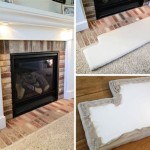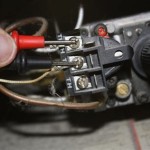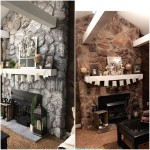Kiva Gas Fireplace: A Deep Dive into Design, Functionality, and Considerations
The kiva fireplace, a design deeply rooted in the traditions of the American Southwest, has evolved from its original adobe construction to encompass modern adaptations, including the integration of gas as a fuel source. This article provides a comprehensive overview of the kiva gas fireplace, examining its design elements, functional aspects, and key considerations for installation and maintenance.
Traditionally, kiva fireplaces were built as enclosed, rounded structures made from adobe bricks, featuring a small opening at the front for fire and a chimney integrated into the structure itself. The design was optimized for efficient heat retention and slow release, contributing to the comfort of dwellings in the arid climates. Contemporary kiva gas fireplaces draw inspiration from this traditional form while incorporating modern materials and technologies for improved efficiency, safety, and aesthetic appeal. These fireplaces often utilize steel framing, prefabricated fireboxes, and varied exterior finishes beyond traditional adobe, allowing for customization and integration into diverse architectural styles.
The transition to gas as a fuel source offers several advantages over traditional wood-burning kiva fireplaces. Gas eliminates the need for wood storage, reduces particulate emissions, and provides greater control over the flame and heat output. Furthermore, gas units often incorporate safety features such as oxygen depletion sensors and automatic shut-off mechanisms, enhancing user safety and minimizing the risk of carbon monoxide poisoning. While maintaining the aesthetic essence of the traditional kiva, the gas-powered version provides a more convenient and environmentally conscious heating solution.
Design and Aesthetic Variations
Kiva gas fireplaces are characterized by their rounded, organic shapes and often feature a simple, minimalist design. While the classic adobe finish remains popular, modern iterations offer a wide range of exterior finishes, including stucco, plaster, stone veneer, and even metal cladding. The shape of the kiva can also vary, from the traditional beehive-like structure to more angular or elongated forms. The size of the firebox and the opening can be adjusted to suit the room’s dimensions and the desired visual impact.
One of the defining features of a kiva fireplace is the absence of a traditional mantel. Instead, the curved surface of the structure itself serves as the focal point. Decorative elements, such as nichos (small alcoves) or hand-painted details, can be incorporated into the design to add personalized character and reflect the homeowner’s style. The integration of gas logs or decorative stones within the firebox allows for a simulated wood-burning experience while maintaining the convenience and cleanliness of gas fuel.
The vent design also plays a crucial role in the overall aesthetic. Direct-vent gas fireplaces, which draw combustion air from outside and vent exhaust gases directly outside, offer greater flexibility in placement and eliminate the need for a traditional chimney. Vent-free gas fireplaces, on the other hand, do not require venting but must meet specific safety standards and regulations due to the release of combustion byproducts into the room. The choice of venting system will influence the design and placement of the kiva fireplace.
Functional Aspects and Performance
The primary function of a kiva gas fireplace is to provide supplemental heating and create a warm, inviting ambiance. Gas fireplaces offer instant heat and precise temperature control, making them a convenient and efficient heating source. The heat output of a kiva gas fireplace is typically measured in British thermal units (BTUs), and the appropriate BTU rating should be selected based on the size of the room and the desired heating level. Factors such as insulation, window area, and ceiling height will influence the heating requirements of a space.
Modern kiva gas fireplaces often incorporate advanced features such as electronic ignition, thermostat control, and remote operation. These features enhance user convenience and allow for precise control over the flame and heat output. Some models also include energy-saving features such as intermittent ignition systems and variable flame height settings, reducing gas consumption and minimizing environmental impact. The efficiency of a gas fireplace is measured by its Annual Fuel Utilization Efficiency (AFUE) rating, which indicates the percentage of fuel energy that is converted into usable heat.
Proper ventilation is essential for the safe and efficient operation of a gas fireplace. Direct-vent systems offer the best performance in terms of safety and energy efficiency, as they draw combustion air from outside and vent exhaust gases directly outside, preventing the buildup of harmful byproducts inside the home. Vent-free systems require careful consideration of ventilation requirements and adherence to local building codes to ensure safe operation. Regular maintenance, including cleaning the burner and inspecting the venting system, is crucial for maintaining optimal performance and ensuring user safety.
Installation and Safety Considerations
The installation of a kiva gas fireplace requires careful planning and adherence to local building codes and manufacturer’s instructions. It is highly recommended to hire a qualified professional with experience in gas fireplace installation. The installation process typically involves running a gas line to the fireplace location, installing the venting system, and connecting the fireplace to the gas supply. Proper grounding and electrical connections are also essential for safe operation.
Safety is paramount when installing and operating a gas fireplace. All gas connections should be leak-tested to ensure there are no gas leaks. Carbon monoxide detectors should be installed in the vicinity of the fireplace to alert occupants of any potential carbon monoxide buildup. It is crucial to follow the manufacturer’s recommendations for clearances to combustible materials to prevent fire hazards. Regular inspections and maintenance by a qualified technician are essential for ensuring the continued safe operation of the fireplace.
Local building codes and regulations may dictate specific requirements for gas fireplace installation, including venting requirements, gas line sizing, and safety features. It is important to obtain the necessary permits and approvals before commencing installation. Failure to comply with local codes can result in fines and potentially hazardous conditions. Consulting with a local building inspector or gas appliance professional can help ensure compliance with all applicable regulations.

30 Corner Orno Gas Log Burning Kiva Fireplace Kit Capo Fireside

Adobelite Southwestern Kiva Fireplace Kits

Gas Fireplaces Adobelite Mountain West S

30 Corner Orno Gas Log Burning Kiva Fireplace Kit Capo Fireside

Gas Fireplaces Adobelite Mountain West S

New Kiva Rumford

Adobelite Southwestern Kiva Fireplace Kits

Grand Canyon Awo Kiva Logs Arizona Weathered Oak Gas Only

Grand Canyon Kivabrn Kiva Burner System For Adobelite Fireplaces Royal Fire Pits

Southwest Kiva Prefabricated Fireplaces Fireplace Corner Gas House
Related Posts








